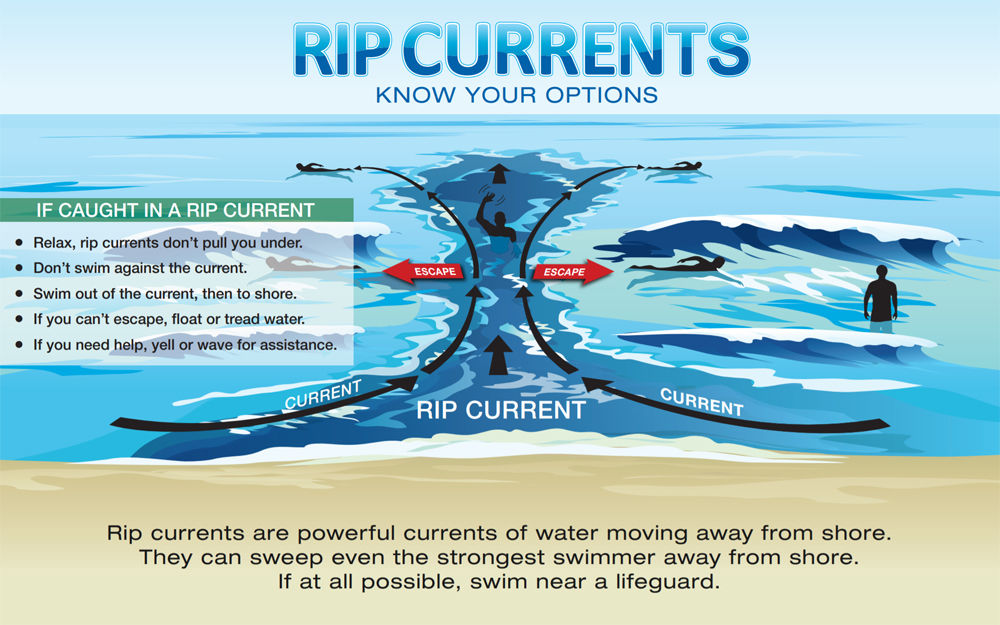
Hurricanes don’t have to be close to shore to pose a danger to swimmers. Those in the D.C. area are urged to use caution as Hurricane Dorian makes its way closer to beaches within driving distance of D.C.
“Rip currents can be pretty dangerous, even when a storm is very far off shore,” D.C. Coast Guard Auxiliary spokesman Dan Dunham said.
Hurricane Bertha, for example, was 1,000 miles away from area beaches in 2008 when Dunham said it contributed to the deaths of three people along the New Jersey coast and required 1,500 lifeguard rescues in Ocean City, Maryland, over the course of a week.
Dunham’s advice for escaping a rip current: Don’t fight it.
“Drownings usually take place when people exhaust themselves trying to swim against the current,” Dunham said. “Let the current take you out. Stay calm. Swim along the shoreline until you feel the current relax then start making your way toward shore.”
When you first begin to notice a current is pulling at you, Dunham advises treading water or floating on your back.
“They don’t last forever, they won’t pull you under water,” he said. “Really, it’s just a question of remaining calm, letting the current run its course and then swimming back to shore.”
Swimmers should check with the lifeguard about water conditions and whether it’s safe when first arriving at the beach.
“If in doubt, don’t go out,” Dunham said. “And swim near a lifeguard whenever possible.”








